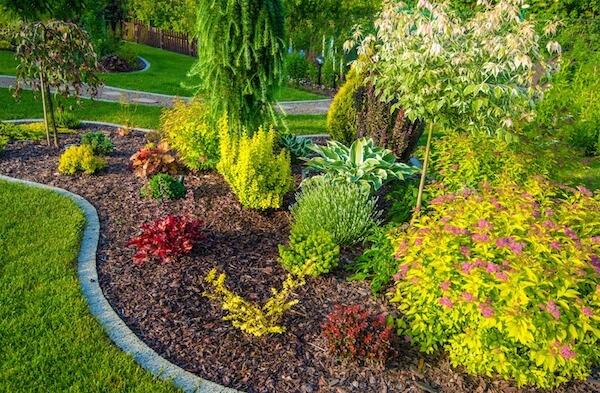
Right Plant, Right Place
Designing a beautiful yard is a bit like putting together a puzzle. It would be great if you could just place plants and lawn ornaments wherever they look the best and cross the finish line. But there is a reason that landscape designers are not cheap, and that is because designing attractive and functional lawns is not easy. It is part art project and part science project. Everything has to be strategized for optimal growth and be able to survive while also pleasing the eye.
One of the greatest challenges of designing a yard is plant placement. Each plant has its own set of requirements such as water and light, and needs the right environment to grow to it’s full potential. It is extremely important to do your research before purchasing plants for your yard so that you can be sure that they are the best choice for your specific yard. Without the proper environment, plants can die and make your yard look worse and also waste your money. Here are some tips for before, during, and after you decide what plants will work best for your lawn.
Consider Your Environment
Before anything, get in touch with what goes on in your backyard. Take notice of how much sun certain areas get and what kind of soil you have. The Florida terrain is quite inviting for a variety of low-maintenance plants but basic things like how much sun and water is available are crucial no matter what. Once you know how much light certain areas of your yard gets throughout a regular day and how much water you will be able to provide, you can begin the process of deciding on what kind of plants will work best in those areas.
Water & Fertilize Appropriately
After you mapped out your plant purchases and grouped them together with similar needs, it is time to water and fertilize. Plants that need little light and not much maintenance should be in the same area and the same goes for plants that need lots of sun and attention. Grouping your plants this way will make it easier for watering and fertilizing. Develop a system for taking care of your plants the most efficient way possible. The goal is to have a beautiful landscape without taking too much time or effort from your normal day. Check the weather regularly to help factor how much water your plants will need from you, make sure your sprinklers are sprinkling only the areas that need water, and water early in the morning if possible.
Florida can make watering plants tricky because of drought tolerance and intense heat. Keep in mind that there are other options for watering that do not involve your hose, such as rain barrels (see Top 10 Benefits of Rain Barrels). Do some research into what kind of fertilizers or mulches your plants need for their best growth. Investigate the possibilities of composting natural yard and food waste to make your own free and safe fertilizer. Plants need food and water just like us and it is important to keep them healthy by giving them the care they need. Depending on the plant, mulch can help retain moisture in the area and also give your yard a nice, neat look. Consider all of the water and fertilizer needs of your plants right away so that from the very beginning, you have a good system of taking the proper care of your new yard.
Deflect Weeds and Pests
Florida landscapes are at a high risk for unwanted weeds and pesky insects. These are not always avoidable but they can be prevented to the best of your ability. Managing landscapes with the smallest amount of chemicals possible is the best choice for you and for the environment. Some weed and feed options can actually cause harm to the plants you are trying to protect and not all insecticide products are friendly to your lawn. The best way to prevent unwanted life in your lawn is to mow the grass to the appropriate height as it is needed and spot-treat any areas you are suspicious of with environmentally friendly products. It may come down to needing to pick insects off by hand, and your plants will thank you for it.